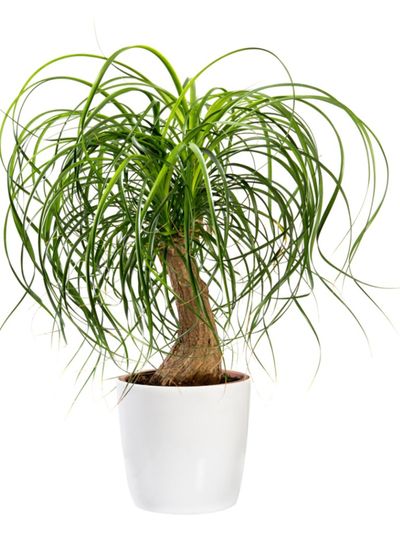The Ponytail Palm Tree
Oddly enough, a ponytail palm tree is neither a palm nor a tree. In fact, it is a member of the Agave family and is actually a succulent. Other common names for this plant include the bottle palm tree or the elephant foot tree. In the past, it has been classified as either Nolina recurvata or Beaucarnea recurvata, but the latter is now the correct classification of this plant. The common characteristics of this plant include a bulbous trunk, which is used to store water, and its long, hair-like leaves that grow from the top of the trunk like a ponytail, giving the plant its renowned name.
Growing Ponytail Palms
Growing ponytail palms in the home is easy. Technically, a ponytail palm tree needs bright light, but because it is such a forgiving plant, it will be okay if you give it bright light about half the time. In fact, if you keep it in low light conditions half the year and provide bright light conditions the other half the year, it will be perfectly happy. This means that as long as you place it outdoors in the summer, it will tolerate any indoor light conditions you keep it in during the winter. Since this plant is a succulent, it grows best in semi-dry conditions. When growing ponytail palm as a houseplant, you should let the soil dry out significantly in between waterings.
How to Care for a Ponytail Palm
The care instructions for ponytail palm are relatively short. Because ponytail palm care requires dry soil, it is best to let them get root bound before repotting. When you do repot them, use a pot that is only an inch or two (2.5 to 5 cm.) wider than the previous pot. If you repot them into a larger pot, they can get too much water at once, which can damage their growth and health. Ponytail palms only need to be fertilized two or three times per year. Any more than this and the plant may develop brown tips on the leaves. Ponytail palm care is very easy, and growing ponytail palms as a houseplant is a great way to add a stunning and visually interesting plant to almost any room.
